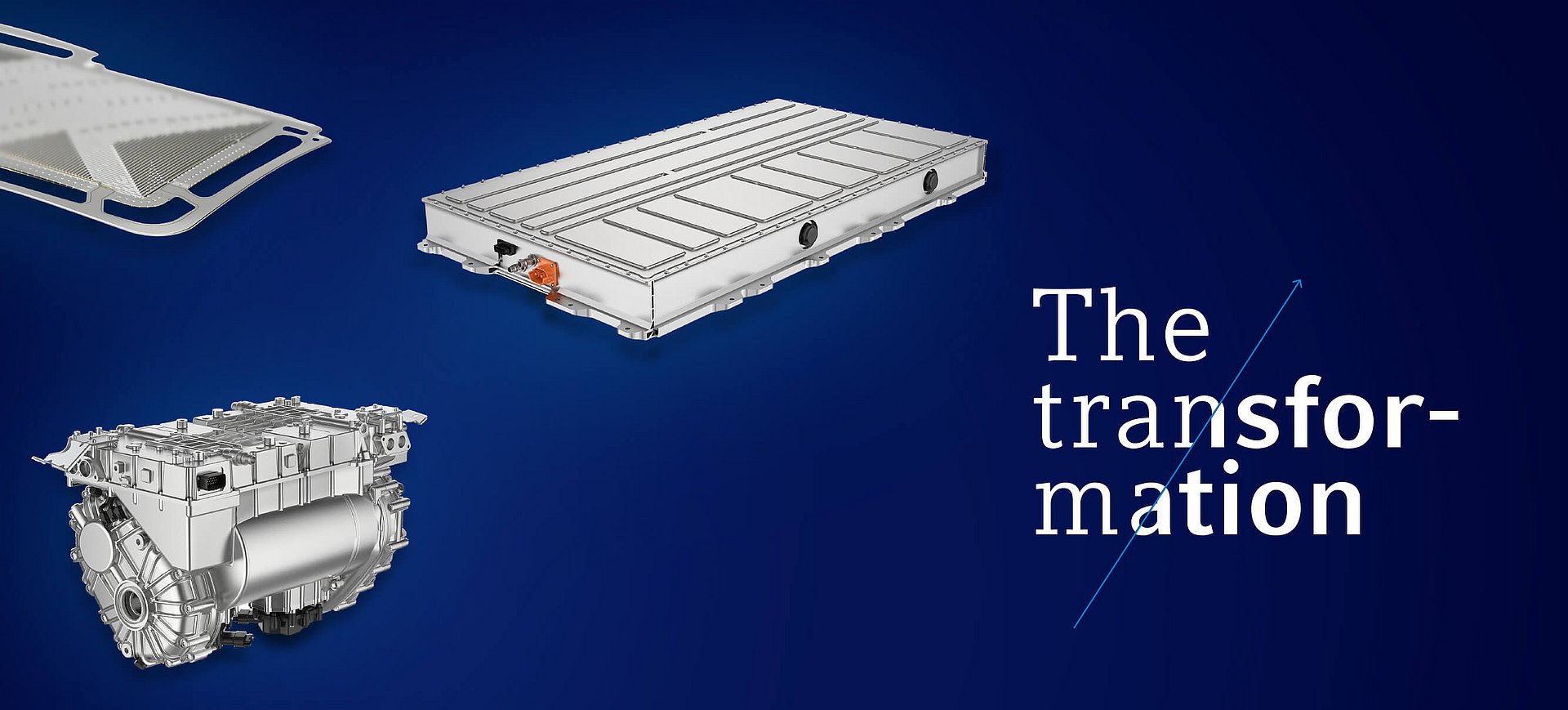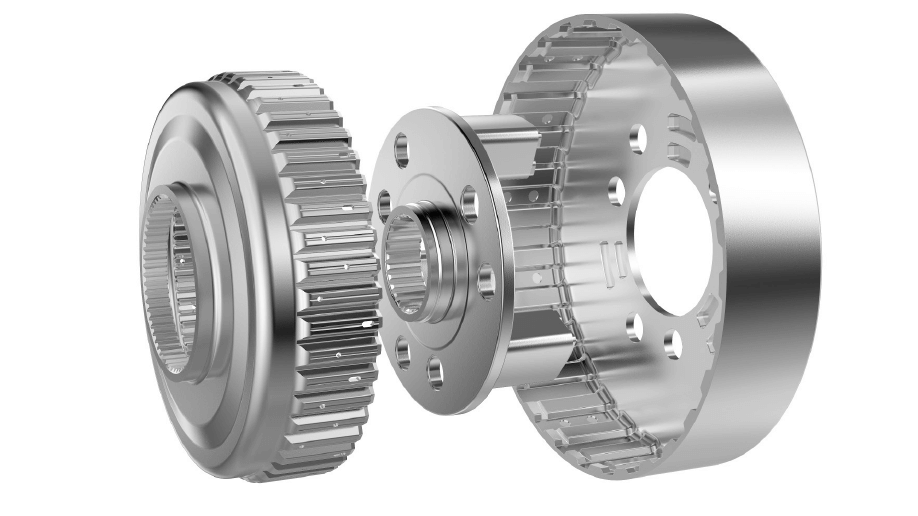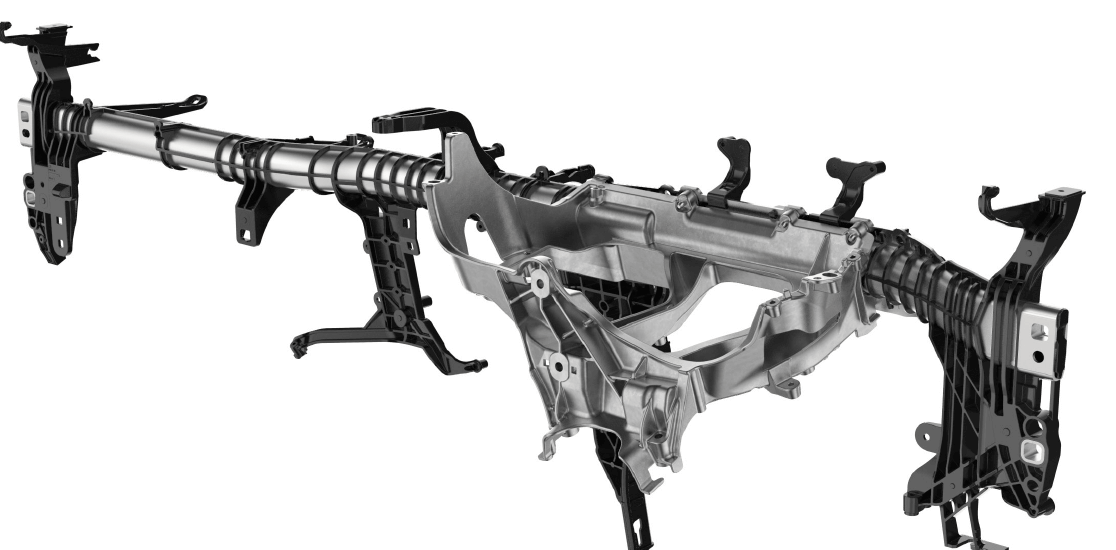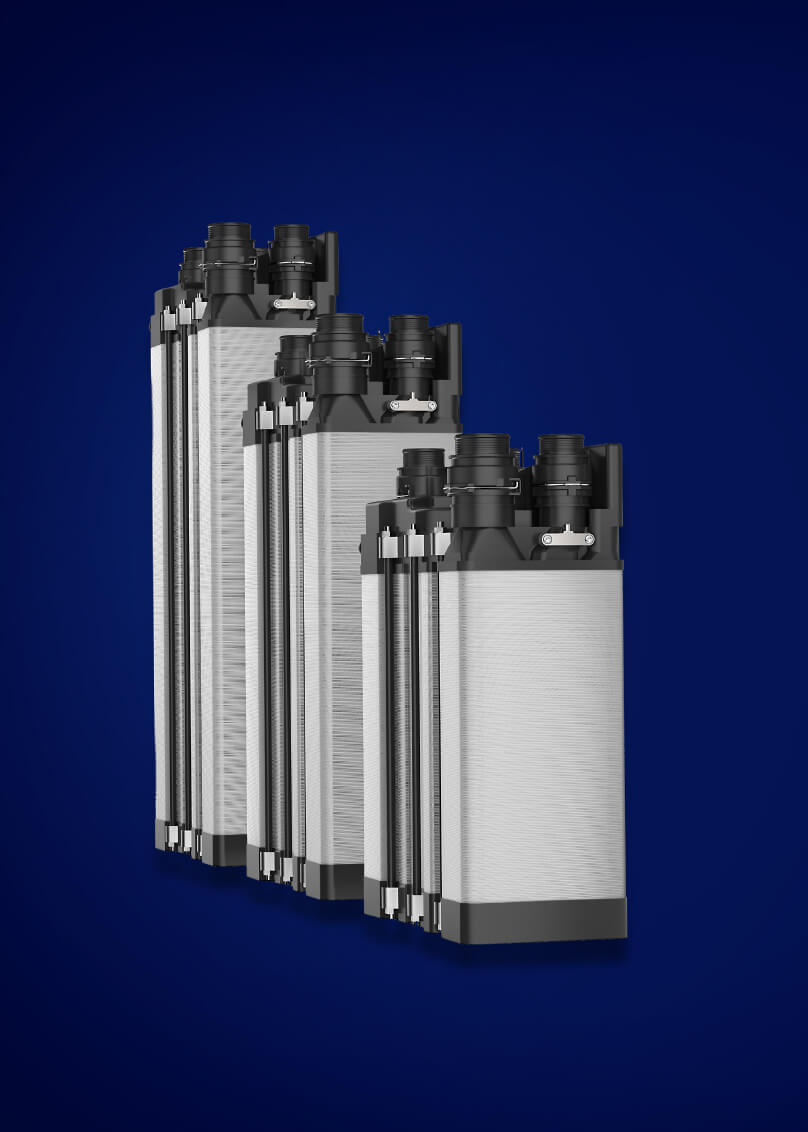
The transformation
Mobility is changing. Success in this transformation will be reserved solely for the company that gears itself up for this change across the board and sets clear paths toward the future. The Fifth Industrial Revolution – Industry 5.0 – that awaits us will be all about linking human and digital intelligence, about sustainability, and about resilience. With itsown winning factors, ElringKlinger has clearly set a course for shaping this transformation successfully.
The ElringKlinger Group's portfolio within the area of electromobility encompasses both system and modular solutions as well as individual components, such as battery storage units, bipolar plates, or electric drive units.
When we climb into the car of tomorrow, mobility will look different to how it does today. The world is changing. Let's take the past as our benchmark. Can you still remember? We used to operate the "choke" to coax the engine into life during a cold start. Electric windows were just as much a sign of pure luxury as central locking. Seatbelts were initially seen as a constraint, not a safety feature.
The transformation has become noticeably faster. The next few years will see much more far-reaching changes than those of the past, and more quickly too. Most people expect transport to be more interconnected. This would also enable autonomous vehicles to fuse private with public transport by putting needs and opportunities on an equal footing. Robot taxis will ferry people around in small groups and drop each of them off at their chosen destination. However, the most important step in this direction began a long time ago. It involves the vehicle's drive: climate-neutral technologies will dominate the vehicle markets – initially concentrated in certain regions and for specific applications. Going further forward, however, more factors will come into play. The key words here will be sector coupling and charging and hydrogen infrastructure – plus the willingness of the markets to keep on embracing the new drives together with all their ramifications.
Ten years ago, new drive technologies were still seen as something of a peripheral phenomenon. Even as recently as five years ago, only one in 17 new vehicles rolling off the global production lines was fitted with a hybrid, battery, or fuel cell drive. By 2022, this had increased to as many as one in four. ElringKlinger was quick to commit itself to these new technologies and became a series supplier for battery components as early as 10 years ago. For fuel cells, meanwhile, the Group actually began developing its initial expertise 20 years ago. This meant that, rather than having to find its way into the process of transformation, ElringKlinger has actually been contributing know-how, expertise, product solutions, and production techniques as a series manufacturer for many years.

50 %
In addition to withstanding high mechanical loads, disk carriers also boast up to 50% less weight compared to standard market solutions.
By embarking on its own transformation early, ElringKlinger is not only relying on leveraging its strong market position for combustion engine components but is also pursuing two more key strategic paths.
First, the Group's original, traditional business units have used their skills in combustion engine technology to come up with new solutions for electromobility applications. With its disk carrier, for example, the Metal Sealing Systems & Drivetrain Components business unit – which also includes cylinder-head gaskets – has brought a product to series manufacture for a battery-electric vehicle model of a European manufacturer. However, the business unit will also bring its metalworking expertise to bear for rotor and stator solutions in electric motors in the future. This is all part of ElringKlinger's DNA: identifying new areas in which the Group's expertise and strengths can be harnessed in order to add value through innovative solutions.

Structural components developed by ElringKlinger, such as cockpit cross-car beams, feature an excellent performance-to-weight ratio, load path-based design, and outstanding capabilities when it comes to functional integration.
Over the past few years, the Lightweighting/Elastomer Technology business unit has already begun to generate an increasing percentage of its revenue from products that are fitted inside latest-generation vehicles. One good example is the cockpit cross-car beam. Originally developed in collaboration with a German premium manufacturer for vehicles powered by a combustion engine, the cross-car beam was able to reduce their fuel consumption and thus their carbon emissions as well by achieving a significant weight reduction compared to the prevailing technology of the time. As well as with combustion engines, however, the cross-car beam also proved a success with electric drives, where the lower weight increases a vehicle's range. The cockpit cross-car beam has since been optimized for several manufacturers and is now being mass-produced. But that is not all in terms of looking to the future: the business unit is also supplying electric-vehicle manufacturers with metal-elastomer gaskets for their batteries. Overall, a significant proportion of the business unit's revenue is already being generated in connection with the mobility of the future.
Carbon dioxide is released by vehicles burning fossil fuels, which contributes to climate change.

205 kWel
EKPO fuel cell stacks achieve an output of up to 205 kWel.
The Group's second strategic path is heading firmly toward the new technologies. With its metallic bipolar plate and stacks, the Group is able to offer powerful solutions for fuel cells. The Group has been forging this path successfully since 2021 together with the French automotive supplier Plastic Omnium. EKPO Fuel Cell Technologies, a company in which both partners hold ownership interests, boasts a number of impressive attributes, not least the market-leading performance density of its stacks and its expertise in industrial-scale production. Specifically, these stacks achieve values of 6.2 kW/l inside the cell block. What is more, the company has already achieved an initial production capacity of up to 10,000 units a year. It gained a foothold in China in 2022 with the establishment of a subsidiary there.
As it has with fuel cells, ElringKlinger has also used its knowledge to unlock innovations in the field of battery technology. The Group began its journey down this road at an early stage: the cell contact system – as crucial a component for a battery system as the cylinder-head gasket is for the combustion engine – entered series production as long ago as 2012. An order for series production from a global battery manufacturer, who will be incorporating the cell contact system into the new platform designed by a European manufacturer, is currently getting under way. While building up its expertise in the series production of components, the Group has also broadened its knowledge base and can now supply modules and complete systems as well.
In addition, ElringKlinger has incorporated its mass-production expertise in the new technologies into its partnership with hofer powertrain. Whilst ElringKlinger has acquired a strategic non-controlling interest in the parent company hofer AG, the joint production subsidiaries are fully consolidated in the Group in its capacity as majority shareholder. The sophisticated electric drive units manufactured there are intended primarily for the high-end sport and luxury car segment, with series production already under way at the UK site.
Mobility is changing, and ElringKlinger has already laid ideal foundations for succeeding with the mobility of the future through its innovative product range.
However, the Group's products and its decision to focus on innovation from an early stage are not the only success factors that are helping ElringKlinger to shape the process of transformation. Besides its forward-looking product portfolio, the Group's positioning for future growth also has a lot to do with digitalization and process orientation, which is leveraging efficiency savings and generating added value. After all, it is clear that a digital company ecosystem is a necessary condition in order to be fit for the future. The sufficient condition, however, is the human factor. In order to be successful in tomorrow’s economic world – also referred to as the Fifth Industrial Revolution – a company will need to fuse smart machines with the people who work for it. This includes a healthy corporate culture in which diversity, respect, and equality all play a role as well as a corporate group that is on a sustainable footing. But “sustainable” here is not restricted to the environmental sense. Needless to say, it includes climate-friendly production and choosing suppliers who work in line with the UN's sustainability criteria. In this context, however, it is also about the value of work for employees, about a clear and transparent corporate structure, about business integrity, and, last but not least, about a company’s responsibility to society. Ultimately, a corporate group will not only be sustainable by acting in this way but will also give itself the resilience it needs to cope with a diverse range of external influences.
In an effort to act sustainably, companies must see themselves as an integral part of society.
For ElringKlinger, therefore, “transformation” has both an external and an internal side. Mobility is changing, and ElringKlinger has already laid ideal foundations for succeeding with the mobility of the future through its innovative product range. At the same time, it is following some clearly signposted paths in order to create the internal structures that are essential to carving out a successful position. With the help of its employees, therefore, the EUR 3 billion in revenue that ElringKlinger is targeting for 2030 is the logical consequence of this.





